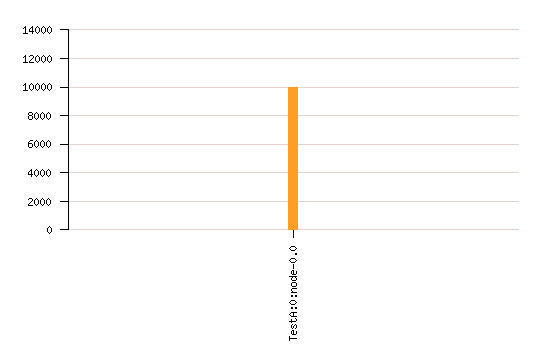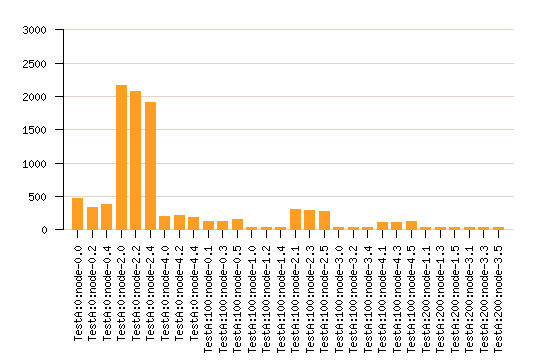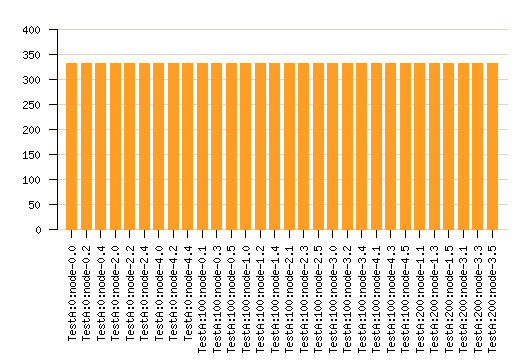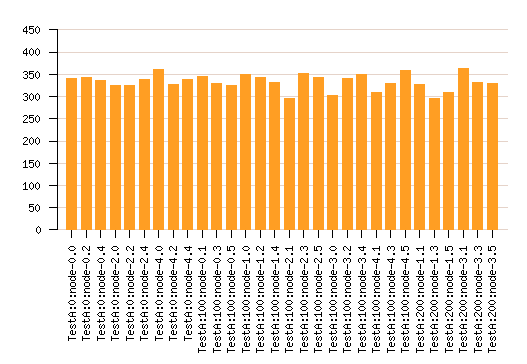Updated : Fri Oct 13 12:00:42 RST 2006
The main purpose of grids is the same than most parallel and distributed systems are designed to achieve : increase computation power by doing more and more tasks at a time. So grid must deal with the same problem. All computing potential can be used only when job to ressource matching is efficient. But wide scale grids are not an high integrated systems and the search for available ressource is a new challange since it is now difficult to know exactly how many jobs are running all over the grid and where jobs are running.
Small parallel systems can rely upon a supervisor to assign jobs as long as the centralised supervision task itself does not need much computation power. Over a wide scale grid, such a centralized process is a bottleneck. It must handle istelf all job queries. When allocation is based upon actual load average of each node, an iteration of node average acquisition all over the grid is required frequently (may be for each job submition). This can't be achieve as the grid grows. The load average time acquisition round may become longer than a job and this process may use all the bandwith available to the allocator.
One second aspect of a large scale grid is it is not necessary made of identical nodes. One of its goal is to bring available unused capacity of as many computers connected to the internet as possible, each can be different and then estimate the grid load capacity and locate available CPU power is difficult. There aren't any absolute hardware capacity benchmark (Hardware sellers invents new benchmark as often as hardware releases) and the best harware to run a task does not depend only on the hardware spec but also on the task itself.
Last, knowing exactly the CPU usage map at a time is not enough to perfectly assign jobs. The problem to solve is : where will there enough CPU power available during the job execution. This can be answered only if jobs submition are planned and each job CPU usage is predictable. Those two conditions will not be satisfied on a grid targeted to share CPU power to more and more users for a wide range of uses.
Biologic systems are adaptives : their configuration envolves to keep close to environnement changes and deal with missing or bad information. Information acquisition is limited by sensors capacity and errors occurs during perception processing (illusions, mirages).
But biologics by using try/error strategies can overpass the sensors limitations and resolve problems from incomplete and imperfect data. The optimum solution is rarely adopted but a quite good one is very often found and simulated biologic systems also succeed to without needing too eavy computation.
As explained before, as the grid grows, the grid state becomes more and more difficult to acquire and process. Since the perfect information needed for an optimal load balancing is not available in real world cases, a biomimetic system should be more efficient, especialy where needed information is not available or quite obsolete just after its acquisition. But if it can't reach the perfect balance it should be able to get to a good one, and we hope it will not hang the grid with its own process.
Life is ressource finding : food, water, a safe place to rest, reproductors... And some more litlle things for a certain lifeform (oil, gold).
Well studies food searching :
Ants because, an ant is very simple, then is easy to modelise.
Ant searching for food is exactly equivalent to our problem : jobs searching for a CPU.
Food searching is undirected routing : the system does not know were is the food, but it can find where is the closest and the closest way to it.
Using a CAS strategy to resolve job to CPU mapping may still overload the job submition if it stays on a single allocator. A centralized one will need high query serving capabilities and enough bandwith to relay all jobs submition all over the grid and to recieve queries of all users. There will never be enough bandwith available to serve a grid as wide as the internet itself.
Another big lack of a centralized allocator is that when it stops running (malfunction, overlaod), all the grid become unavailable.
One solution is to distribute the load balancing process itself all over the grid. As it is done by many existing internet services (DNS, routing, P2P, ...), queries may travel the grid from node to node
Each node is related to some other : it knows a few node among all widely available and can transfert job request to them.
Job query routing from node to node is not a problem since like what is observed from real ants, short path to CPU will become attractive quicker than long one and then become more and more attractive unless no more CPU is available at the end of the short path...
Since there is no more global supervisor, there is no need of a global and absolute load estimator. Each routing node may use its own. The only requirement is that the load estimator should disciminate overloaded nodes from others.
Each node may also use its own selector to apply local heuristic if it is locally pertinent : a subnetwork of stricly identical nodes may be Round Robin load balanced...
Each grant node is running this selection algorithm to select a node among the known node at each job request :
When a node recieve a job execution report, it updates mark for node that sent the report and relay the report to its parent node in route path if any.
Submit the same job query list to the same virtual node network using different load balancing methode :

Nodes have an intrinsec static performance. This is emulated by forcing job sleeping with fixed value delay





Here is shown the capacity of the grant allocation to distribute load relating to nodes power. The overall grid load is significatvely lesser than with the "silly" distributions Random and RR. But the grid exploration leads to many job missaffected since the only way to estimate one node capacity is to assign a job to it.
Since in this model, the best solution is simply to use always the more powerfull nodes (jsut one of them is enough), the grant allocator will never be able to succeed.
The previous model is reused and another delay is added relating to node load at job end.





Copyright (C) 2004-2006 Sébastien DEVAUX